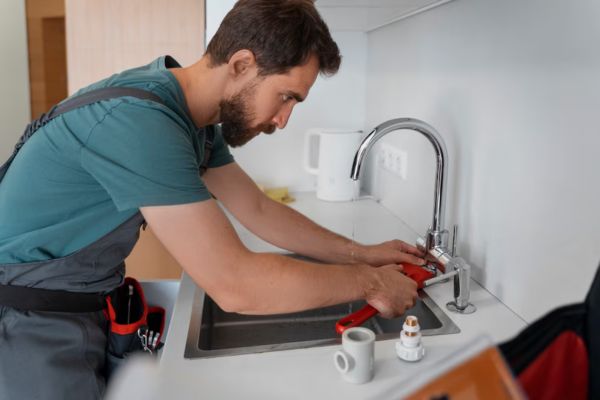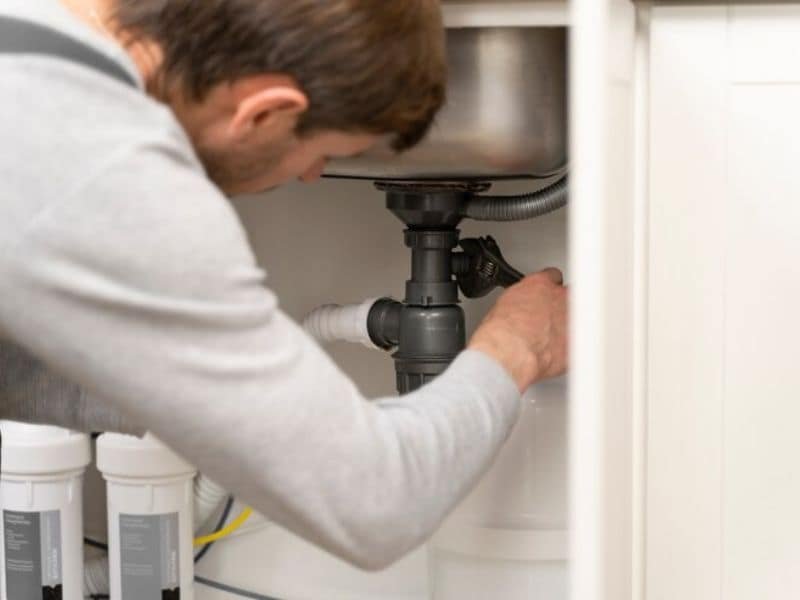Before diving into the details, here’s what you need to know at a glance: Kitchen sink clogs are most often caused by a buildup of food particles, grease, soap scum, and mineral deposits within the drain lines Fortunately, a range of accessible DIY methods—from plunging and pouring boiling water to chemical‑free baking soda + vinegar treatments—can clear most blockages quickly. When those fail, mechanical tools like drain snakes, bladders, or augers can reach deeper obstructions and restore proper flow Regular preventive maintenance—such as running hot water, installing strainers, and using enzymatic cleaners—helps keep your pipes clear and dramatically reduces the likelihood of future stoppages.
Common Causes of Kitchen Sink Clogs
Most kitchen sink blockages share a few common culprits:
- Food particles and grease accumulate and solidify in pipes.
- Soap scum and mineral deposits cling to the inside of drain lines.
- Foreign objects (e.g., utensils, coffee grounds) become lodged.
READ MORE: Kitchen Sink Draining Very Slowly
DIY Methods to Clear a Clog

1. Boiling Water
Stream boiling water down the drain can dissolve and flush away grease‑based clogs.
- Carry a kettle or pot of water to a rolling boil.
- precisely pour the hot water into the drain in two to three stages, pausing between pours.
2. Plunging
A sink‑specific plunger can often dislodge minor blockages.
- Fill the sink with three to four inches of water to cover the plunger’s cup
- Secure the plunger over the drain and pump vigorously for 20–30 seconds.
- Lift straight up to break the seal and check flow; repeat if needed.
3. Baking Soda and Vinegar
This chemical‑free reaction can break up light to moderate clogs.
- Pour 1 cup of baking soda entering into the dry drain.
- Follow with 1 cup of white vinegar & cover the opening to contain fizzing.
- After 10–15 minutes, flush with hot tap water.
4. Cleaning the P‑Trap
The U‑shaped P‑trap under your sink often collects debris.
Place a bucket underneath the trap to grab water.
- Loosen the slip nuts and eliminate the trap.
- Clear out debris, rinse the trap, and reinstall.
5. Using a Drain Snake or Auger
Hand‑crank augers can reach deeper blockages beyond the P‑trap.
- Give foof to the snake into the drain until you feel resistance.
- Rotate the handle to break up or hook the clog.
- Retract the snake and run water to flush residual debris.
6. Drain Bladder
A pressurized bladder attaches to a garden hose to blast clogs with water pressure.
- Secure the bladder in the drain and connect your hose.
- Turn on the water to inflate the bladder, forcing water through the clog.
- When clear, deflate the bladder and test your drain.
7. Enzymatic and Commercial Cleaners
Enzyme‑based cleaners use natural bacteria to digest organic matter, while chemical openers dissolve grease and hair.
- Follow label instructions carefully, especially for contact time and ventilation.
- Use enzyme cleaners regularly as maintenance; reserve harsh chemicals for stubborn clogs.
Preventive Maintenance
Staying on top of maintenance reduces the frequency of clogs:
- Avoid pouring grease or oil down the drain, as they solidify when cool.
- Install strainers or screens to catch food particles before they enter the pipes.
- Run hot water with dish soap weekly to dissolve residual fats.
- Use enzymatic cleaners periodically to keep organic buildup at bay.
When to Call a Professional
If you’ve tried all DIY methods and water still won’t drain, or if multiple fixtures are affected, it’s time to call a licensed plumber. Severe blockages deep in the sewer line or persistent issues may require specialized equipment and expertise.
By understanding the root causes of clogs and applying these proven techniques, most kitchen sink blockages can be cleared quickly and safely—saving you time, money, and frustration.
Frequently Asked Questions
1. What causes a kitchen sink to clog?
Most clogs form when grease and fats solidify on the inside of drain pipes, trapping food debris and soap residue. Small objects like coffee grounds, vegetable peelings, and utensils can also lodge in the pipes, leading to blockages over time.
2. How can I unclog my kitchen sink without harsh chemicals?
One of the simplest methods is to pour a cup of baking soda into the drain followed by a cup of white vinegar; the fizzing reaction helps break apart light clogs. After letting it sit for 10–15 minutes, flush the drain with hot tap water to clear the loosened debris.
3. How do I use a plunger effectively on a kitchen sink?
Fill the sink basin with enough water to cover the plunger cup, then place the plunger firmly over the drain and pump vigorously for 20–30 seconds.
Lift the plunger straight up to break the seal and check if the water drains; repeat as needed.
4. When should I remove and clean the P‑trap?
The P‑trap under the sink often collects trapped debris and should be cleaned when other methods fail or if you notice persistent slow draining.
To clean it, place a bucket underneath, loosen the slip joints, remove the trap, empty debris, and reassemble.
5. How do I use a drain snake to unclog a deep blockage?
Insert the snake cable into the drain until you feel resistance, then rotate the handle clockwise to break up or hook the clog.
After loosening the obstruction, retract the snake and flush with water to clear any remaining debris.
6. Can I use boiling water to clear a grease clog?
Pouring boiling water down the drain in two or three stages can melt grease buildup and flush it away.
Allow the hot water to work for a few seconds between pours to maximize effectiveness.
7. What should I avoid pouring down my kitchen sink?
Avoid disposing of cooking oils, fats, and grease down the drain, as they solidify and attract debris that leads to clogs.
Also steer clear of coffee grounds, pasta, rice, and sticky items like adhesive labels, which can expand or adhere inside pipes.
8. How often should I perform preventive maintenance?
Perform preventive treatments—such as monthly baking soda and vinegar flushes—to dissolve residual buildup before it becomes a clog.
Install and regularly clean sink strainers to trap food particles and minimize debris entering the drain.
9. When should I call a professional plumber?
If multiple fixtures are affected, or if clogs persist after DIY methods, it’s time to call a licensed plumber.
Deep blockages in the sewer main or issues with sewer lines require specialized equipment and expertise.
10. Can I use commercial drain cleaners?
Commercial drain cleaners can be effective for organic blockages, but they contain harsh chemicals that can damage pipes if overused. Consider enzyme‑based cleaners as gentler, eco‑friendly maintenance options that digest organic matter over time.
Final Verdict
A clogged kitchen sink can turn a simple chore into a time‑consuming headache. When water cannot drain properly, it forms a stagnant pool that often emits foul odors and becomes a breeding ground for bacteria. Understanding what causes these blockages and how to clear them empowers you to keep your kitchen running smoothly and avoid expensive plumbing calls.

